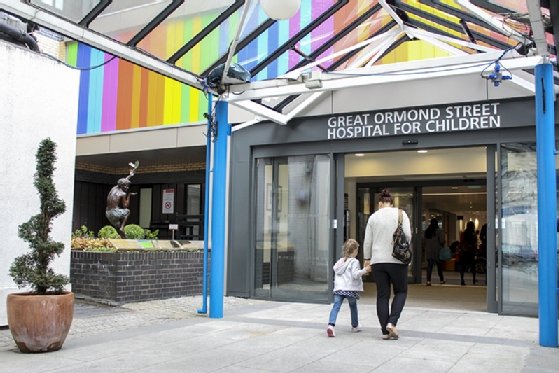
sudok1 - stock.adobe.com
A new era of collaboration for the NHS
Great Ormond Street Hospital's new research and innovation unit, Drive, marks a significant shift towards greater collaboration between NHS organisations and third-party industry partners
The opening of Great Ormond Street Hospital’s (Gosh) Drive research and innovation unit is, for chief research information officer (CRIO) Neil Sebire and his colleagues, an important first step towards reimagining how the NHS can make better use of technology to deliver healthcare services.
The initiative is the result of a collaborative effort between Gosh and NHS Digital, supported by a memorandum of understanding (MoU), that will see the latter party contribute £1m in capital funding to support Drive’s work.
“Drive’s key focus will be in exploring, piloting and fostering the use of cross-sector commodity technologies and products to quickly and economically address needs within health and care,” the MoU states.
It adds that the vision for Drive is to create an “early-phase technology and informatics unit for the front line of the NHS, aiming for rapid translation into clinical practice”.
Although memorandums of understanding are not fully binding, it is still a legal agreement that signals ongoing collaboration in the coming years, not only with NHS Digital, but also with third-party industry partners – including ARM, Microsoft and Samsung – which is a rarity for the NHS.
Humble beginnings
According to Sebire, the concept of Drive – short for digital, research, informatics and virtual environments – first emerged two years ago, when Gosh was in the process of reassessing its digital strategy, as it worked to integrate more than 400 clinical systems.
“We are very research active; we do about 1,000 studies a year,” says Sebire. “My role has been to come in as chief research officer and say, ‘How can we use whatever we’re going to do in terms of digital to make our research better?’.”
However, as the digital strategy was scoped out, there came a realisation that consumer technology could be repurposed for use in clinical practice, Sebire recalls. “We tried to look at all the things outside healthcare in tech that were happening that aren’t affecting medicine yet, but likely would do, and tried to say, ‘What would we need to harness all of that?’

“We realised we couldn’t do it alone,” continues Sebire. “If, for example, we want a natural language programming tool, there’s no point in us building one – there’s loads of APIs [application programming interfaces] and cloud-based stuff out there already – so we needed partners, and we specifically tried to speak to partners which gave us different things.”
Samsung, for example, was chosen on the basis of its devices, while Microsoft offered innovation in artificial intelligence (AI) and access to powerful cloud tools.
“We didn’t just randomly pick them. We tried to pick partners that would work together on projects – what we really want from the partners is their expertise and the ability to access their skill and talent pool,” he says.
When asked about data sharing between the partners, Sebire says the data, specifically patients’ medical records, will be kept within the hospital itself.
“If we want to use some machine learning tools on our data, we will pull down their tools onto our data,” he says. “The whole point of this research platform is so that we could control all of the data – it doesn’t have to go out at all.”
A ‘kinder’ kind of care
According to Sebire, the main aim of Drive’s push to reorient technology for use in healthcare is ultimately to improve patient outcomes and experiences, a sentiment echoed by Drive’s clinical director, Shankar Sridharan, who spoke of using technology to make the care it provides “kinder”.

“When we designed our electronic patient records, for example, [we added] a field called ‘fingerprint’ which no one’s done before. We would like to [use this, and] capture at Gosh the favourite colour of every child, what animal they like, what football team – so when we walk into a consultation we can go, ‘Do you really like Chelsea?’, and I think it says a lot,” says Sridharan.
“I think a hospital that can be bothered to know the favourite colour of 80% of the five-year olds who come in is probably bothered enough to care and actually be pretty good at everything else – that’s an example of being kind.”
Looking to the future
Sebire is under no illusions that what Drive is setting out to do could prove highly disruptive for the UK healthcare industry.
“Loads and loads of jobs are going be required in hospitals that don’t exist now,” he says. “You’re going to need a chief data scientist, a chief roboticist, a chief algorithm validator; you’re going to need all of these skills that don’t exist in healthcare, so where are you going to get these people from? Who’s going to make those jobs? How are we going to pay them?”
Aware of the plethora issues faced by the NHS, Sebire adds: “We’re not stupid enough to think we can solve all [of the NHS’s] problems, but what we are about is pushing the boundary on that early-phase stuff to say, ‘This is going to be a problem, we need to solve that’.”
In terms of getting the technologies developed by Drive into wider use across the NHS, Sebire says working with NHS Digital should provide it with a way in.
“Once we’ve developed that [technology] and we have the device – we know the data stream, we know where the data is going, we know how to deal with the platform – we would then hand that off to NHS Digital and say, ‘You now need to do the medical bit, but we’ve done the tech bit’,” he says.









